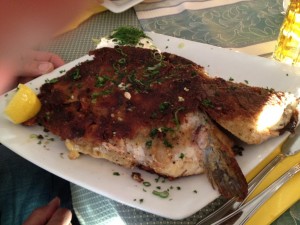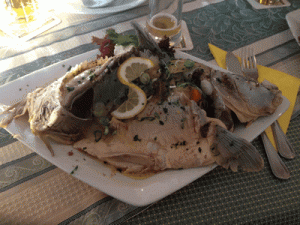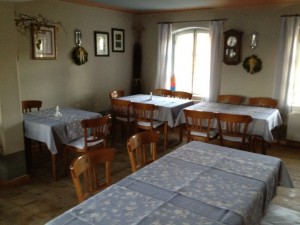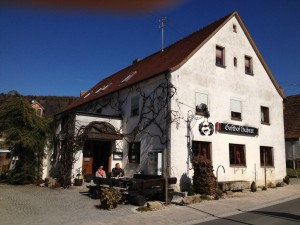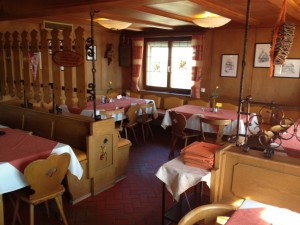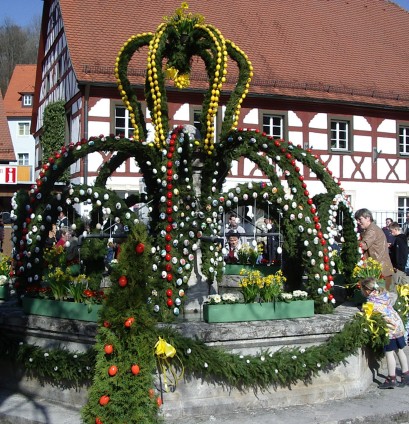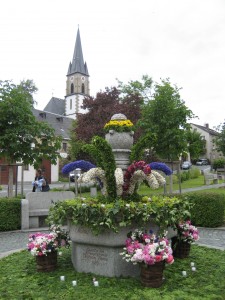 If there would be such a thing as a pilgrimage site for Bratwurst and Bier, the Northern Bavarian region called Franken would definitely be it.
If there would be such a thing as a pilgrimage site for Bratwurst and Bier, the Northern Bavarian region called Franken would definitely be it.
I wrote about the beer of this region in a previous article so here we will write about the Bratwurst.
To be fair, Bratwurst is widespread all over Germany, but as this is my blog and I originate from the Franken area I am bound by the “Code of the Franks” (lol) to write only about the delicious sausages I grew up with.
The Bratwurst which is translated “Frying Sausage” could include any of the fresh sausages we put on the grill. But what we know as a Bratwurst here in the USA are the sausages introduced and made famous by German immigrants. They are served at any festival with a German/Bavarian background and at many backyard BBQ’s. In the last few years this “Wurst” category was expanded to include many varieties like beer brats, jalapeno brats and even brats with cherries in them.
With all those new flavors here, concocted to increase sales, we have to go back to the Franken region to experience the true, even centuries old, original varieties of these great Wurst/Sausages, many of which are proudly tied to a specific county or even town. The recorded history of some of these sausages can go back centuries, with the Nuremberger Bratwurst first being documented in the year 1313.
With every town and every butcher making their own variety it is a matter of trying them to find the one that suits your taste buds the best.
Here are a few of the most famous “brands” in the region.
- Nuremberger Bratwurst are the size of a breakfast sausage, are ground one time and will have Marjoram as part of the seasoning. The usual serving size is either three on a bun or six on a plate with the accompaniments you prefer, like potato salad, sauerkraut, creamed horseradish or just a plain hard roll.

- Franken Bratwurst found in the north eastern part of this region are usually made from a combination of veal and pork seasoned with a touch of lemon zest, stuffed into a sheep casing (diameter of a hot dog), linked about 7 inches long and after grilling mostly served on long hard rolls with mustard or as a full meal with sauerkraut and potato salad.

- Coburger Bratwurst are a local specialty made from pork and beef, the casing used, the ingredients, the specific length are strictly regulated by the town and they have to be grilled over pine cones. It is said that the staff held in the right hand of the figurine on top of the Rathaus (City Hall) is the correct length measure for this treat, which is 31 cm long. Do not miss the opportunity to try one, if you are there visiting the enormous castle on a day when they have the farmers market open at the market square.
- Sulzfelder Meterbratwurst is another famous brat. Originating almost 60 years ago when a patron at a local tavern exclaimed: “These are so good, I could eat them by the meter!” The owner went to his in-house sausage kitchen, made one, cooked and served it 30 minutes later and therewith began a tradition which made this village famous and all Brats here are now ordered only by length. With that came the brave souls who tried to eat for free by breaking the record, which right now stands at a respectable 5 m 60 cm (over 18 feet) plus sides. As we are here in the Main wine area this usually dry wine often ordered and served with it compliments this meal.

- Another popular, regional preparation method for brats is the Sauere or Blaue Zipfel with the recipe at our Inge’s Kitchen website.
 This is only a sampling of the wide variety available in this area and at one point I will work out a tour/trip on the theme
This is only a sampling of the wide variety available in this area and at one point I will work out a tour/trip on the theme
“The Beer and Bratwurst of Franconia”
and it will be full of sight seeing, fun, eating and drinking!




